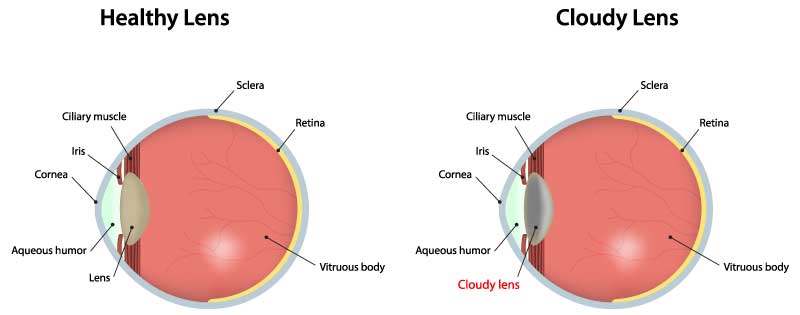
A cataract is a progressive clouding of the human lens inside the eye.
The lens is a small oval like structure and consists of a thin capsule (like saran wrap) enveloping a bag of protein. The protein is crystal clear and colorless at birth but discolors and clouds with age: first yellow, then brown, and finally cloudy. When the lens becomes cloudy and interferes with vision, it is called a cataract. The lens no longer transmits or focuses light clearly. A cataract is not a growth, a "skin", or a disease. It is usually not a sign of eye or systemic disease.
How does a cataract affect vision?
Initially the cataract changes the focusing power of the eye, and a change of glasses can satisfactorily improve vision.
Gradually, clarity drops so that visual tasks become increasingly difficult, despite the best possible glasses.
A person with cataract views the world as if through a dirty window or a windshield that needs defrosting. Glare becomes a serious problem. Color perception becomes muted.
Reading, driving, computer work, hobbies, and athletics become less easy and eventually impossible due to diminished vision.